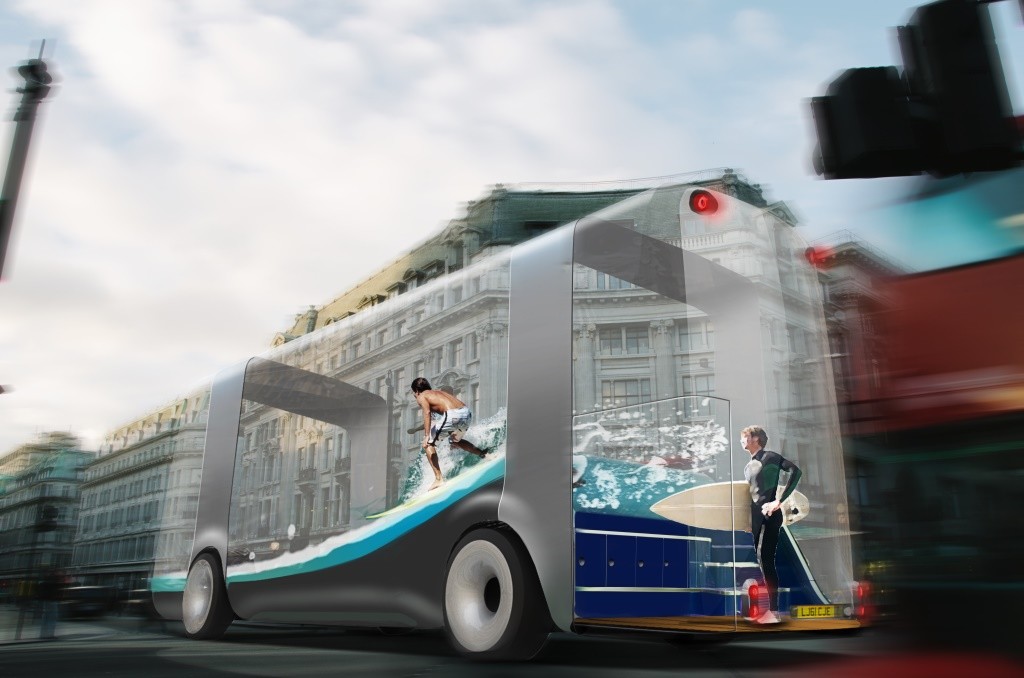Paul Piliste is a London-based vehicle designer who is part of the team behind the “Driverless Futures” exhibition, currently held at the London Transport Museum.
Passionate about cars
Piliste, who is orginally from Tallinn, Estonia, has been living, studying and working in the United Kingdom for twelve years, past three years in London.
He works at the Helen Hamlyn Centre for design at the Royal College of Art as a designer and researcher. His background is in product design and he has spent a few years working for a plastic product manufacturer in England.
His interest in cars started when he was a child and he went to car shows with his dad.
”Being a small child I would climb inside the cars and my parents were always losing me in the crowds at the shows because I was so excited,” he says.
Initially he wanted to study automotive design, but was also interested in electronics and everyday objects. After speaking to the professors at the University of Northampton, he decided to study product design, to gain a wider understanding of ergonomics, aesthetics, colour theory, form, materials and manufacturing.
”Admittedly, most of my projects involved wheels of some sort, and my degree project was an electric driverless taxi for London, called ‘Opti’,” he recalls.
”After a few years, I realised I wanted to follow my dreams of designing the most exciting and romantic products we own – cars.”
He applied for the vehicle design course at the top university in the world for art and design, the Royal College of Art in London.
”I knew that the university had taught some of the most influential figures in the vehicle design world and I was amazed and shocked when I was offered a place,” Piliste notes.
Exhibition “Driverless Futures”
Currently, he is one of the designers and minds behind the exhibition about driverless vehicles, which include display and series of exciting pop-up events at the London Transport Museum.
Part of the Gateway Project, it is a government-funded collaboration between the Helen Hamlyn Centre for Design, Royal College of Art and the Intelligent Mobility Design Centre. The project is about research and design looking to the future of urban driverless vehicles, based in the Greenwich peninsula, London.
”Last summer, we held workshops with over a hundred people, gathering their hopes, fears and gaining an understanding about what would make their dream vehicle. Simultaneously, we worked together with vehicle designers, project researchers, architects and textile designers from the Royal College of Art to formulate ideas about how the future of transportation could look, feel and work,” Piliste explains.
The exhibition raises questions about how we should design future driverless vehicles. It also shows the future of London in juxtaposition – on one side a dystopian society and on the other side a utopian society.
”We have a chance to reinvent this machine that transports people and goods, it does not have to be the same as before – the rules are changing,” he adds.
Driverless cars and their impact for the future
Self-operating cars are definitely another step in manufacturing cars and vehicles in general. It will change our everyday life, changes our habits and our perspectives about vehicles and their usage. Also it has both a positive and a negative impact on us.
”In my opinion, the positive points could far outweigh the negatives, for example independence for the disabled, older people, the visually impaired and those not able to drive, could really change people’s lives,” Piliste mentions.
A driverless car, also known as autonomous car is a vehicle capable of operating without human input. Many such vehicles are being developed, but as of February 2017 automated cars permitted on public roads are not yet fully autonomous.
”I think the future is really up to the designers, architects, engineers and the thinkers of today. If we do it right, the future can be amazing. The danger is, of course, with machine learning technology developing faster and faster. Yes these machines are here to make our lives better, but I share Elon Musk’s fear of artificial intelligence becoming smarter than human beings,” he says.
”Our exhibition in London focuses on the next few decades – when the technical issues have been resolved and driverless vehicles are sharing the roads with each other. These machines and computer minds need to be created with values and ethics that are similar to our own, ultimately their purpose is to serve and help humans.”
In the future, Piliste sees himself designing all kinds of vehicles, driven and driverless. A long-term dream of his is to walk down the street, whether this is in Europe, the Americas or Asia, and see cars that he has designed, driving around and being loved by their owners.
”I am in love with Chris Bangle’s (known for his work as the chief of design for BMW Group – editor) quote, ‘a car designer is really a sculptor’, because people often forget that cars are a work of art, they are engrained into our culture and they express emotion, passion and purpose, much like a painting. Automobiles are not just boxes that move people from A to B, they are moving sculptures,” Piliste says.
I
Cover: Isolation pod dystopia by Paul Piliste (courtesy of Royal College of Art.) Driverless Futures: Utopia or Dystopia? is open until 23 April at the London Transport Museum. Please consider making a donation for the continuous improvement of our publication.








